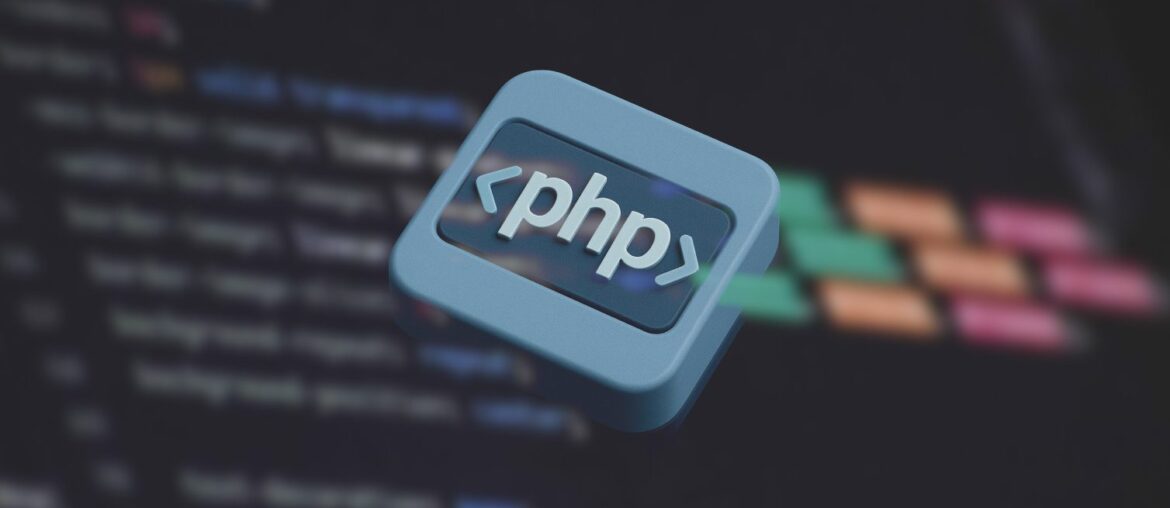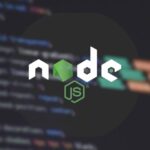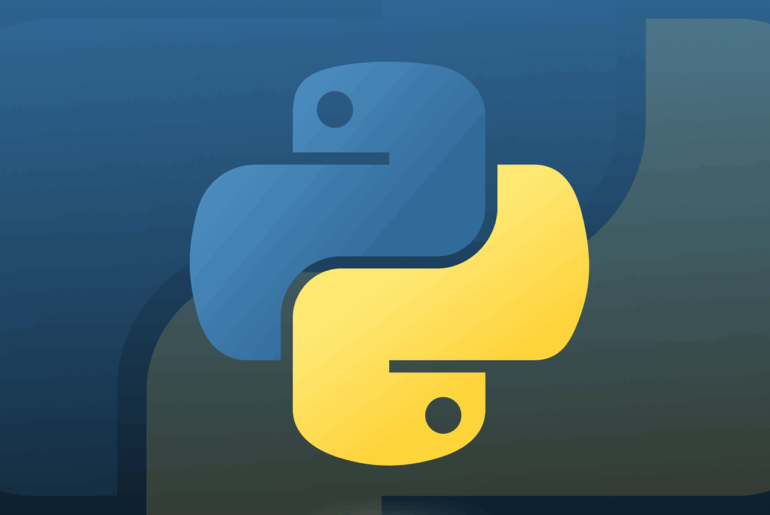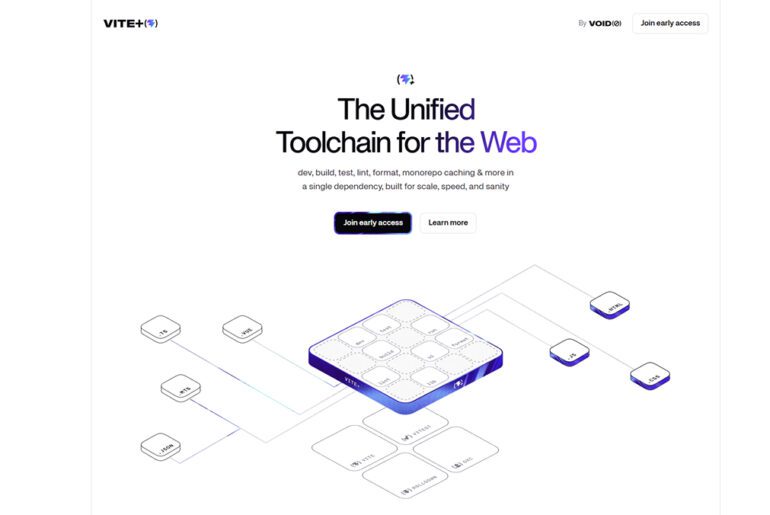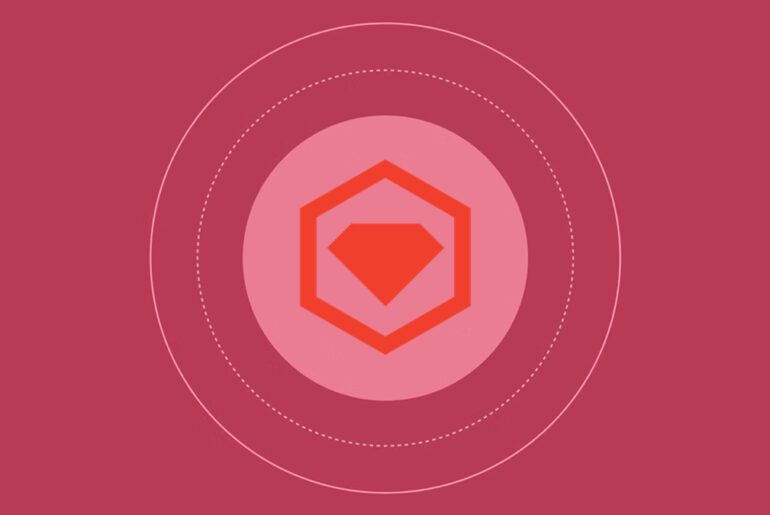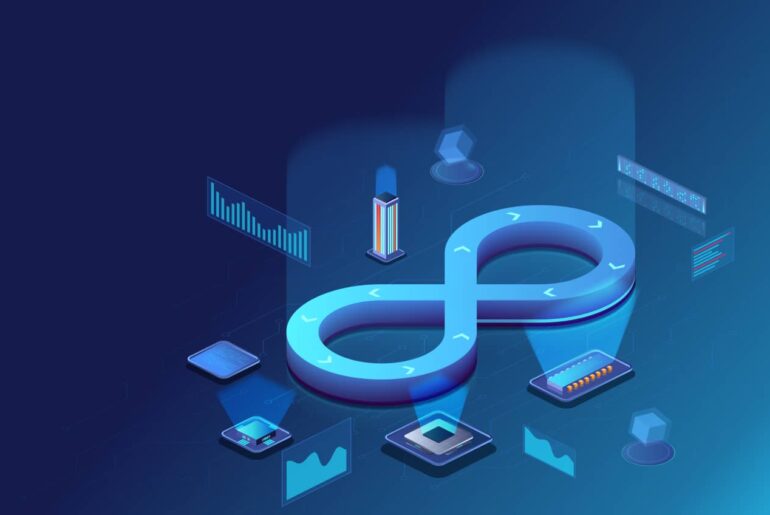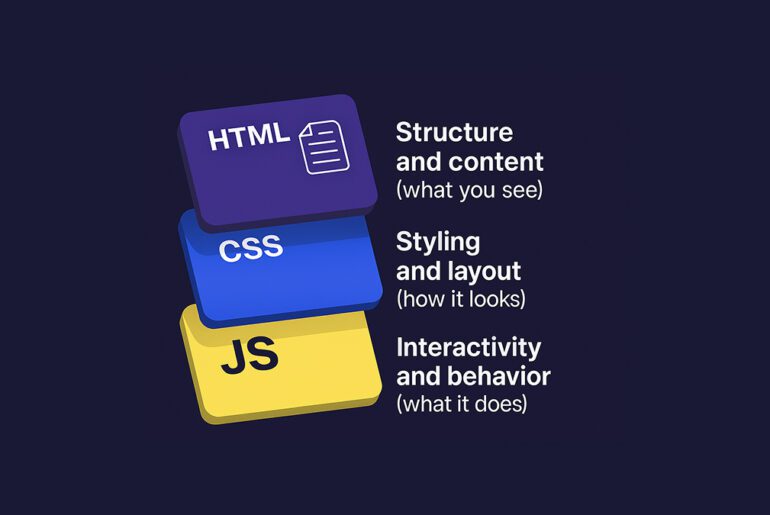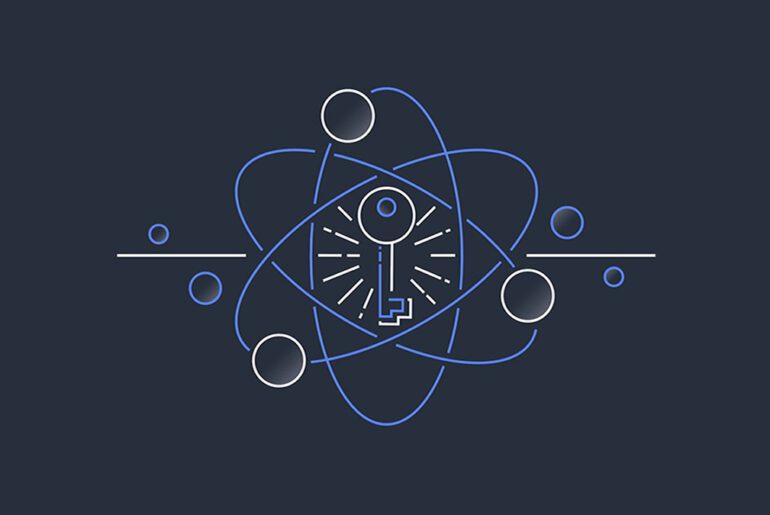PHP’s story begins humbly. In the early 1990s, Rasmus Lerdorf built a little tool in C to track visits to his personal web page. He called it Personal Home Page Tools (PHP). Over time, it evolved into PHP/FI, then into the PHP we know today, releasing version 1.0 in 1995.
Over those decades, PHP grew from a simple scripting glue to power dynamic web pages into a mature language used by many large platforms. Yet as projects got bigger, codebases more complex, and expectations higher (performance, security, maintainability), developers needed more structure than raw PHP could reliably provide.
That’s where frameworks enter the picture. A PHP framework offers you scaffolding: conventions, reusable components, best practices, and often a defined architecture (commonly MVC) that saves you from reinventing common pieces (routing, database access, sessions, authentication, etc.).
In the early days, frameworks like CakePHP and Zend blazed trails. Zend was early in offering reusable, component-based architecture (first released around 2005) and helped bring PHP into a more enterprise land. CakePHP appeared in 2005 as well (initially simpler, inspired by Rails) and gradually matured.
As time passed, new frameworks offered lighter weight, better performance, or improved developer ergonomics. Laravel (launched 2011) grew rapidly by focusing on expressive syntax, built-in tools, and developer friendliness.
Now in 2025, the PHP ecosystem includes a diverse set of frameworks—some robust, some minimal, some tailored for APIs, some for full-blown web apps. Popularity is influenced not only by features or performance, but by community support, ecosystem, learning curves, and use-case fit.
In the sections below, I’ll walk you through the frameworks that are among the top names, providing:
- A brief summary of each,
- Their strengths and trade-offs,
- A small code snippet where helpful,
- When you might choose one over another.
By the end, you should feel capable of comparing them and picking one suited to your project.
Here they are, in no strict “one size fits all” ranking (because “best” depends on context), but ordered by how widely they are talked about, adopted, or influential as of 2025.
Laravel
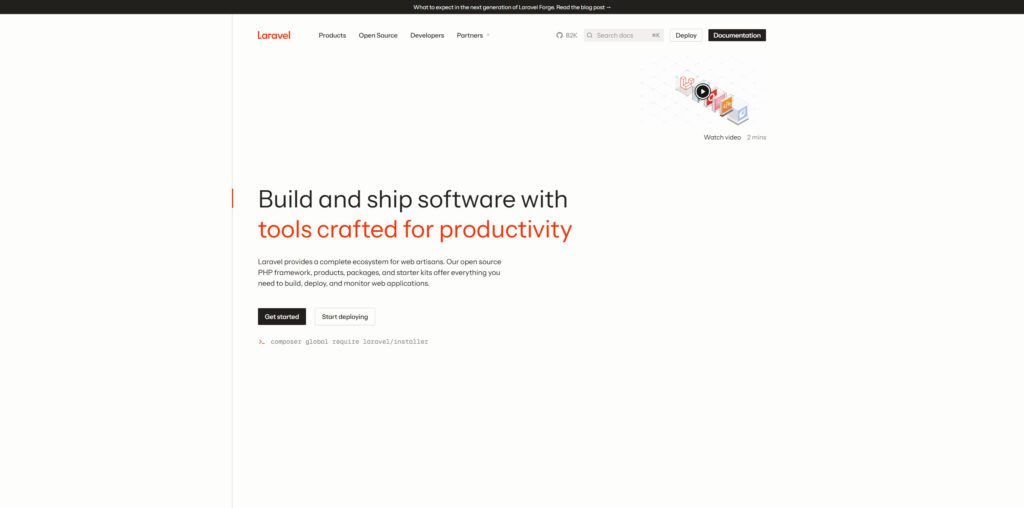
Arguably the poster child of modern PHP frameworks. Laravel consistently leads popularity charts: many PHP developers report using it regularly (some sources claim ~60% adoption)
Laravel builds on Symfony components under the hood, but emphasizes developer experience, “batteries included” philosophy, and little friction for common tasks (authentication, queues, caching, etc.).
Here’s a simple route + controller example:
// routes/web.php
Route::get('/hello', function () {
return 'Hello, world!';
});
// in app/Http/Controllers/HelloController.php
namespace App\Http\Controllers;
class HelloController extends Controller
{
public function show()
{
return view('hello', ['name' => 'Alice']);
}
}Laravel’s ecosystem (Forge, Vapor, Nova, etc.) also helps for devops, scaling, and administrative features.
When to pick Laravel:
- You want rapid development and convention over configuration
- You want a large community and many packages
- Your project is a web app or API with moderate to high complexity
Trade-offs:
- It carries overhead (memory, startup) compared to micro frameworks
- Learning “magic” behavior (facades, service containers) may have a curve
Symfony
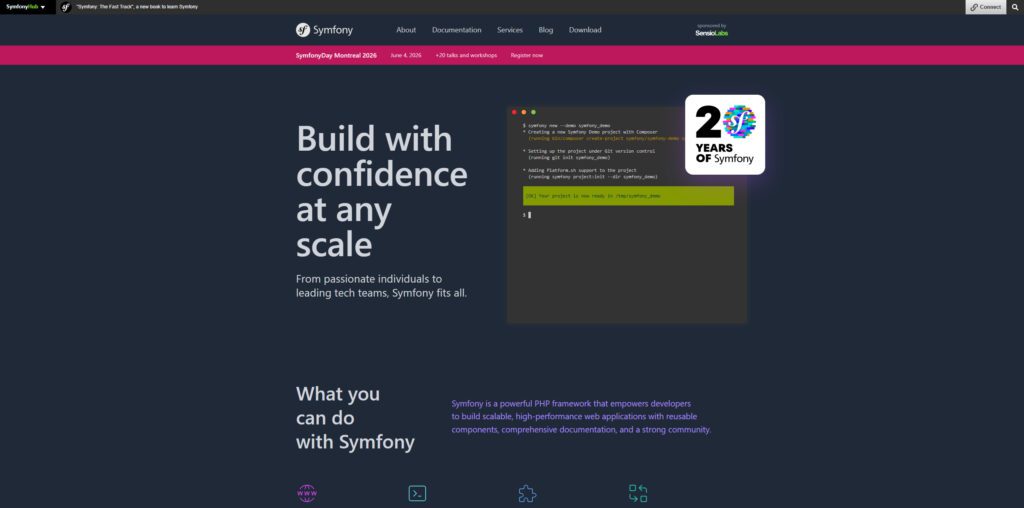
Symfony is the enterprise stalwart. It’s modular (you can use components piecemeal), flexible, and sees use in large systems like Drupal, Magento, or custom enterprise platforms.
Because many frameworks (including Laravel) reuse Symfony components, knowing Symfony gives you insight into underlying behavior. It is less opinionated and more customizable, which gives power at the cost of requiring more initial setup.
A basic controller in Symfony might look like:
// src/Controller/HelloController.php
namespace App\Controller;
use Symfony\Bundle\FrameworkBundle\Controller\AbstractController;
use Symfony\Component\HttpFoundation\Response;
class HelloController extends AbstractController
{
public function index(): Response
{
return $this->render('hello.html.twig', ['name' => 'Bob']);
}
}You’ll configure routes (YAML, PHP, or annotations) and leverage the Dependency Injection container heavily.
When to pick Symfony:
- You need control, modularity, flexibility
- You’re building a large system with diverse requirements
- You may reuse components separately
Trade-offs:
- More boilerplate and setup initially
- Steeper learning curve for DI, event systems, etc.
Laminas (formerly Zend Framework)
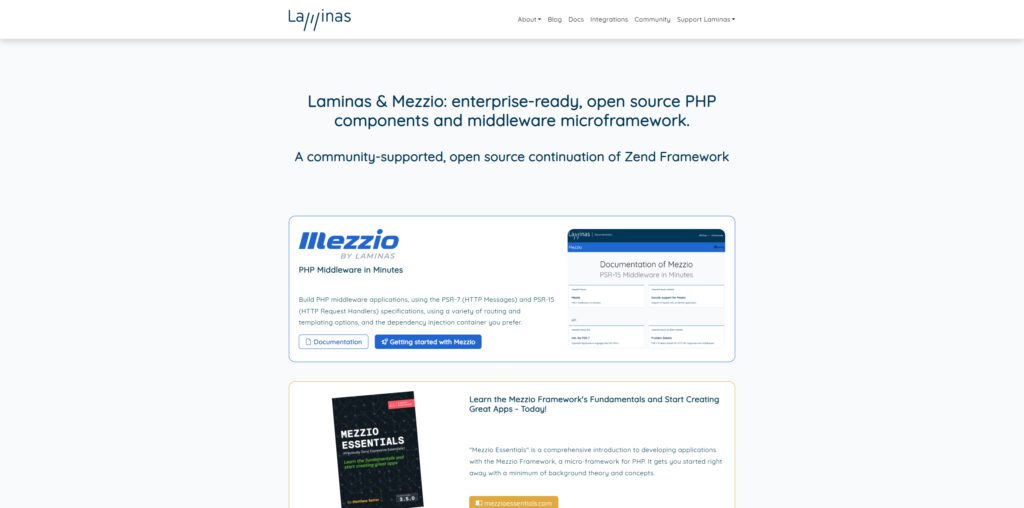
Zend Framework has evolved and rebranded into Laminas. Rather than a monolithic framework, Laminas is a library of components (router, HTTP, security, etc.).
If you prefer building from components, or your project demands parts of a framework without the rest, Laminas is useful. It’s well suited for large, customizable applications that don’t need heavy opinionation.
When to pick Laminas:
- You want component-level control
- You don’t want a full MVC scaffolding framework
- Your architecture is service oriented
Trade-offs:
- You’ll build more plumbing yourself
- Fewer out-of-the-box conveniences
CodeIgniter
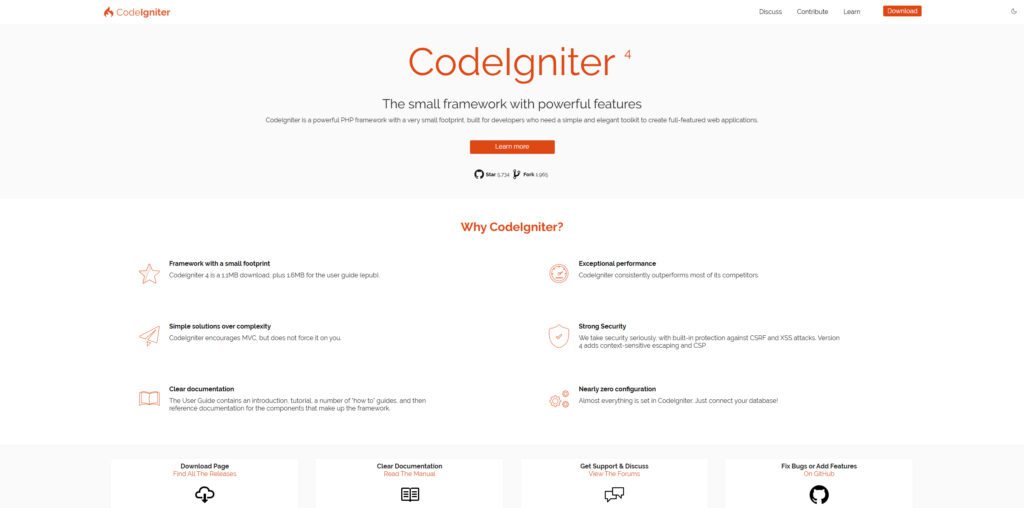
CodeIgniter’s strength is in simplicity, low overhead, and ease of learning. It’s lighter than many of the more modern frameworks. It has endured for many years, partly due to being easy to pick up for simple to moderate projects.
Example controller structure:
class Hello extends CI_Controller
{
public function index()
{
$data['name'] = 'Carol';
$this->load->view('hello', $data);
}
}CodeIgniter historically was a basis for many frameworks (including inspiring Laravel).
When to pick CodeIgniter:
- The project is small or moderate and you want a quick, low-friction start
- You or your team prefer minimal abstractions
Trade-offs:
- Might lack some of the advanced features of more modern frameworks
- Less emphasis on modern practices (though newer versions have improved)
CakePHP
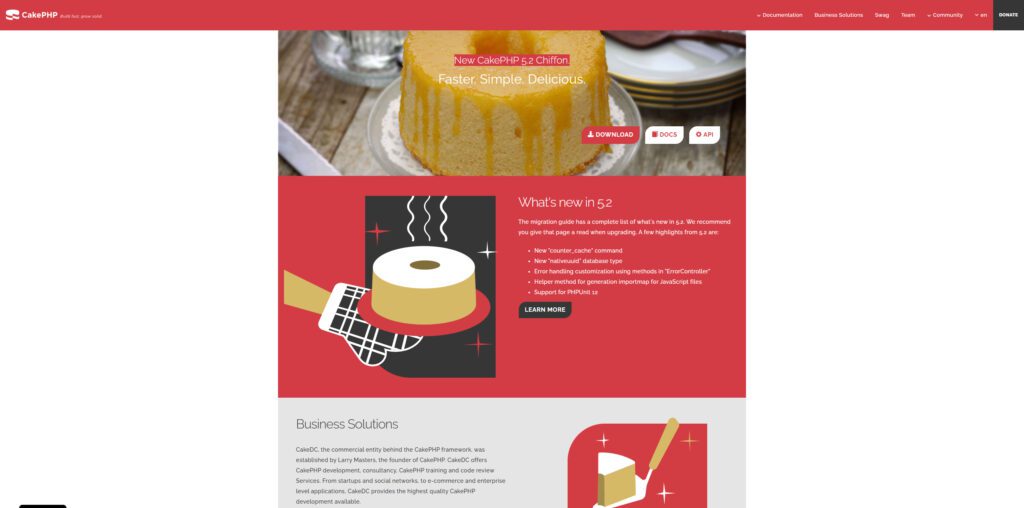
CakePHP is one of the older frameworks, still actively maintained. Its design favors convention over configuration, and it includes built-in scaffolding (Bake), ORM, migrations, validations.
For example, generating code via Bake is powerful. Its ORM combines Active Record and Data Mapper patterns.
When to pick CakePHP:
- You want strong conventions and less boilerplate
- You prefer built tools to quickly scaffold structure
Trade-offs:
- Less flexibility for divergent design
- Some developers might find its “magic” style less explicit
Yii (especially Yii 2 / Yii 3)
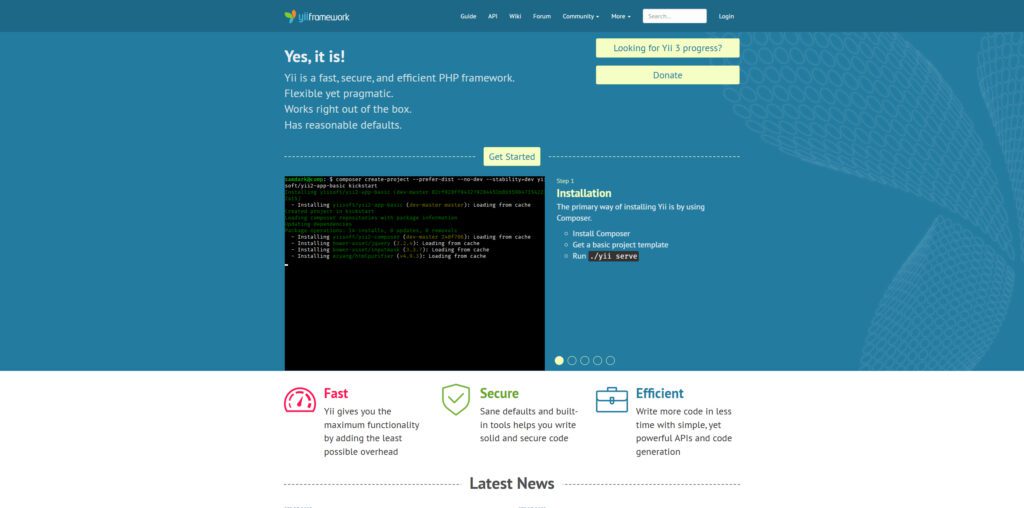
Yii is known for performance, efficiency, and a solid set of built-in tools (Gii code generator, powerful caching, RBAC, etc.).
Because Yii’s architecture is well optimized, it often performs better in throughput and memory in many benchmarks compared to heavier frameworks.
When to pick Yii:
- Performance is critical
- You want built tools (scaffolding, role-based access control) out of the box
- You don’t need extreme flexibility
Trade-offs:
- Ecosystem is smaller than Laravel’s
- Learning curve for advanced features (topics like behaviors, event handling)
Phalcon
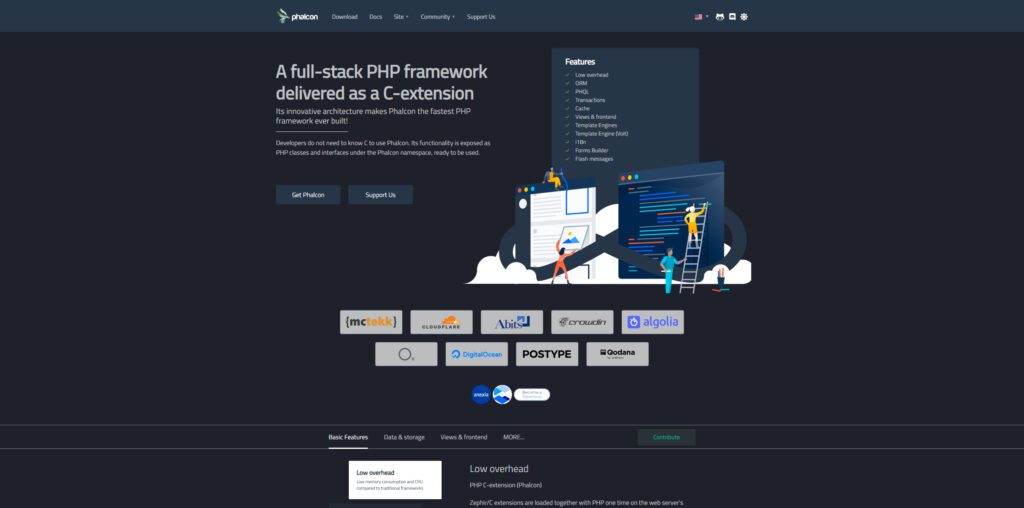
Phalcon is quite different: it’s implemented as a PHP extension in C, giving it near-C performance. Because it lives as a compiled extension, it reduces overhead at runtime.
You code it in PHP, but under the hood performance is optimized.
When to pick Phalcon:
- You require maximum performance and minimal latency
- You’re comfortable installing/maintaining PHP extensions
Trade-offs:
- Deploying on hosting environments can be harder (needs the extension)
- Slightly smaller community compared to mainstream frameworks
Slim / Micro-frameworks
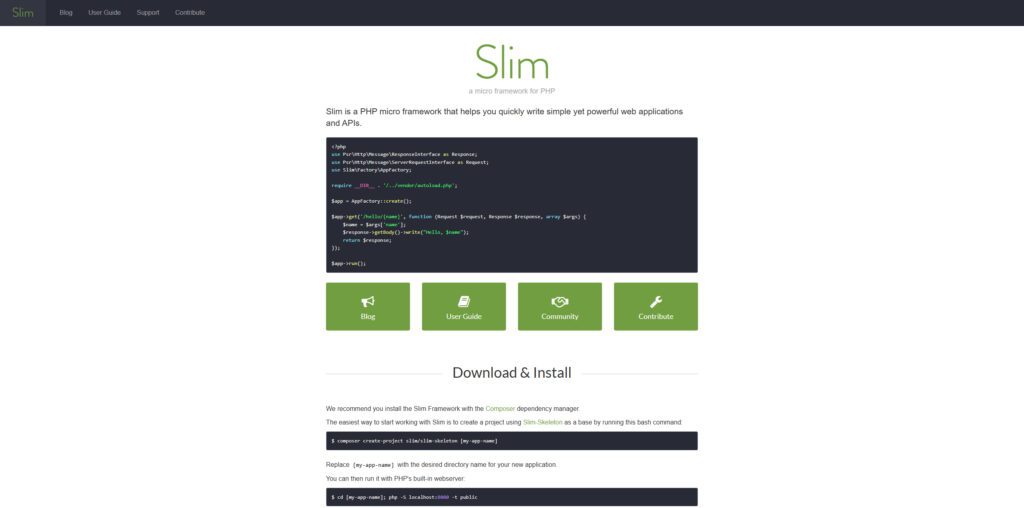
Slim is a micro framework (or minimalist framework): it gives you routing, middleware, and basic handling, but minimal overhead. It’s often used for APIs or small services.
Example usage:
$app = \Slim\Factory\AppFactory::create();
$app->get('/hello/{name}', function ($request, $response, $args) {
$name = $args['name'];
$response->getBody()->write("Hello, $name");
return $response;
});
$app->run();Other micro frameworks (Fat-Free, Lumen, Flight) compete in this space.
When to pick Slim (or a micro framework):
- Building lightweight APIs, microservices, small apps
- You want minimal overhead and full control
Trade-offs:
- You build or choose more of your own components (authentication, validation, etc.)
- Less built-in support than full frameworks
Fat-Free Framework (F3)
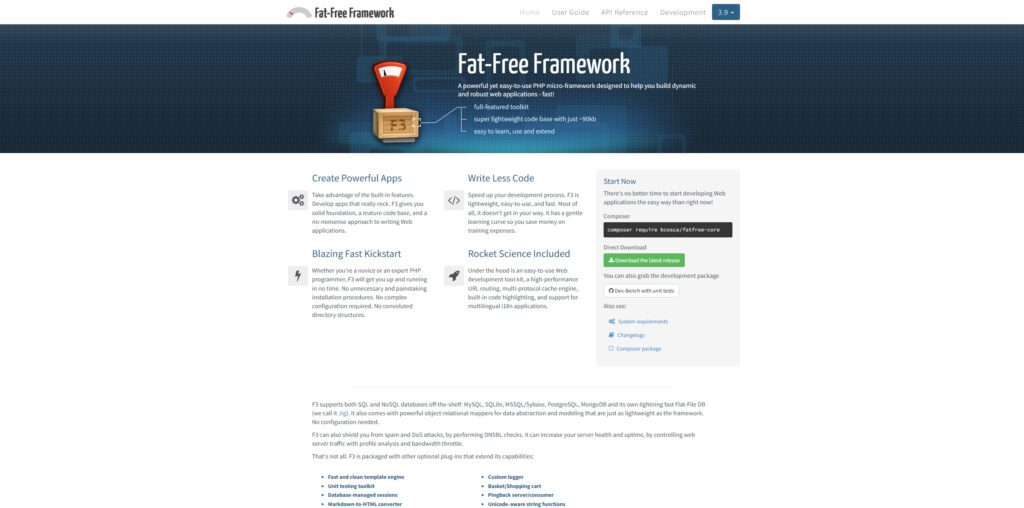
Fat-Free (F3) balances lightweight core with plugin extensibility. It was released many years ago (2009) and is designed to remain small (~83 KB code base).
It supports URL routing, caching, multilingual support, pluggable modules, data mappers (SQL/NoSQL), etc.
When to pick Fat-Free:
- You want a minimal but feature-rich micro-framework
- You want to add only what you need
Trade-offs:
- Community is smaller
- You’ll still assemble bits (validation, security) yourself
Pop PHP Framework
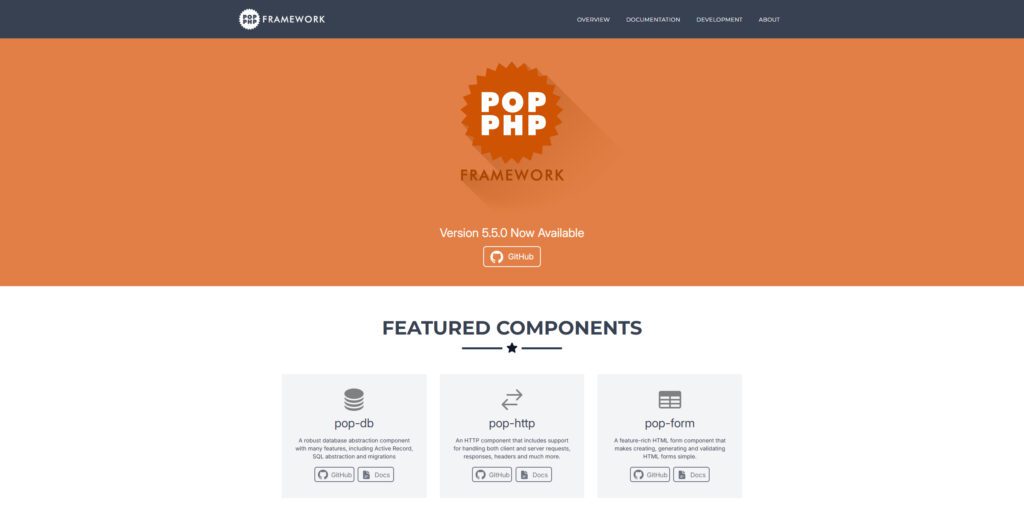
This is less “mainstream” than others, but it is interesting and relatively modern. The Pop PHP Framework supports PHP 8.1+, emphasizes modular components (application, routing, event manager, etc.), and continues active development (current 5.5.0 release as of February 2025)
You can use it for full apps, CLI tools, or microservices.
When to pick PopPHP:
- You want a modern, less widely known framework with contemporary features
- You enjoy exploring newer frameworks and are okay with a smaller ecosystem
Trade-offs:
- Smaller community (less documentation, fewer third-party modules)
- Risk of less long-term “staying power”
Comparison and Trade-Offs
Here’s a mental framework (pun intended) to help you compare:
- Full-stack vs micro: Laravel, Symfony, CakePHP, Yii are full-stack; Slim, Fat-Free are micro.
- Opinionated vs minimal: Laravel and CakePHP have conventions that guide you. Symfony/Laminas are more flexible; micro frameworks are minimal.
- Performance: Micro frameworks and Phalcon often outperform heavier ones in benchmarks.
- Ecosystem & community: Laravel leads here. It has the biggest ecosystem (packages, tutorials, services).
- Learning curve: Slim / micro are easy to begin; Symfony or Laminas may require more plumbing knowledge.
- Deployability: Frameworks relying on PHP extensions (like Phalcon) or incompletely supported hosting may create friction.
You might picture it like this:
graph LR A[Full Stack / Feature-Rich] --> B[Laravel] A --> C[Symfony] A --> D[Yii] E[Component / Modular] --> F[Laminas] G[Micro / Minimal] --> H[Slim] G --> I[Fat-Free] G --> J[PopPHP] K[Performance-centric] --> L[Phalcon]
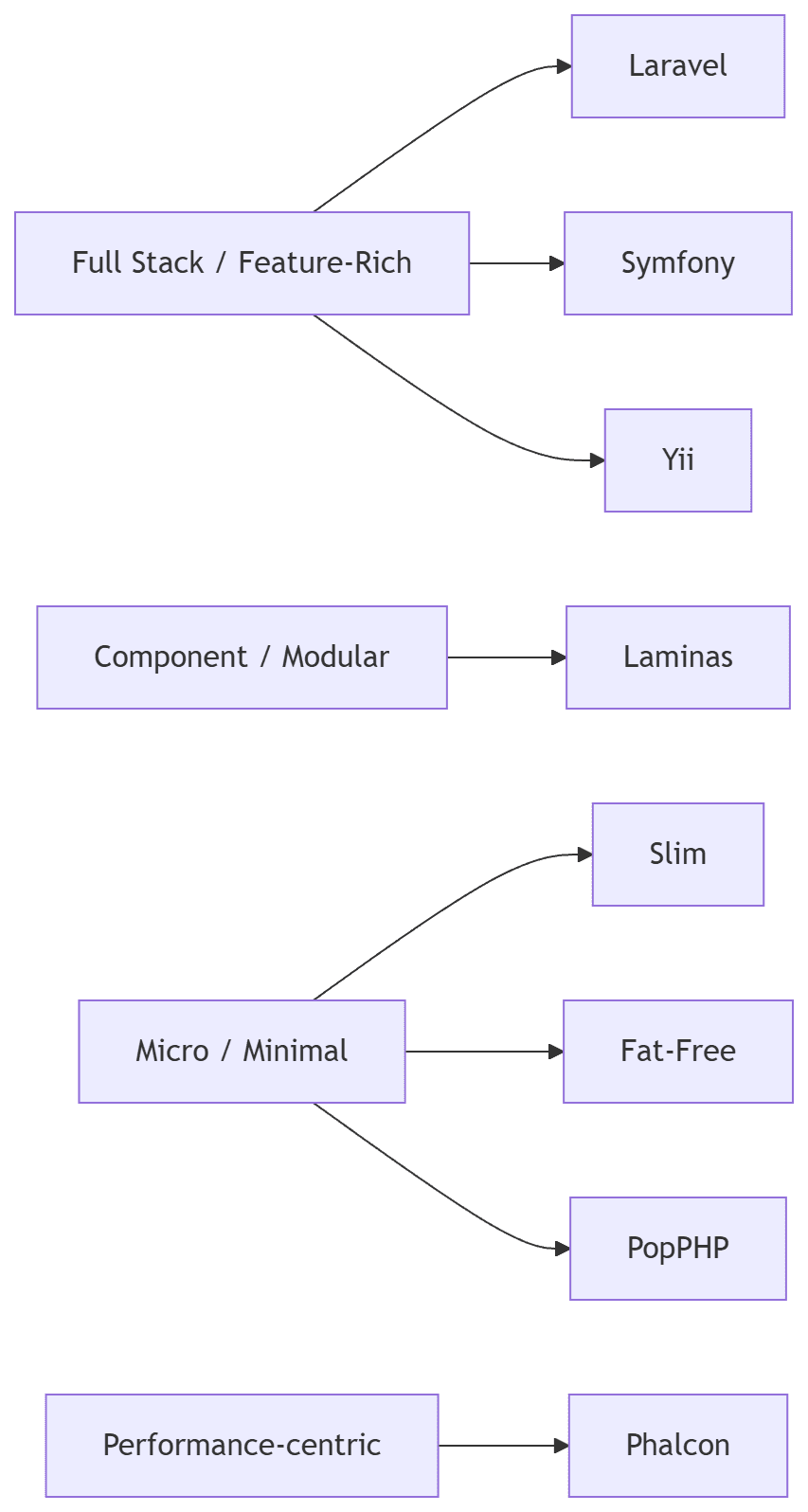
This chart shows spectrum categories rather than a hierarchy.
How to Evaluate for Your Project
When deciding among these frameworks, ask:
- What is the project scale?
For a small CRUD app, micro frameworks may suffice. For large systems, full frameworks shine. - How much built-in tooling do you want?
If you prefer to assemble parts manually, choose more modular options (Symfony, Laminas). If you like scaffolding, pick Laravel, CakePHP, Yii. - What hosting / deployment constraints exist?
If your hosting doesn’t allow installing PHP extensions, Phalcon might be off the table. If performance is critical, micro or Phalcon may win. - What is your team’s familiarity?
Using something your team already knows can save ramp-up time. - How important is community / package ecosystem?
More popular frameworks will have more reusable packages, tutorials, support. - Maintainability & longevity
Choose frameworks with good testing, stable architecture, and active maintainers.
Tips for Getting Started
Begin with something small—maybe a basic “hello world” or a simple CRUD app—so you can get comfortable without being overwhelmed.
Make testing part of your workflow from the start. Every major framework includes testing tools, so even a few basic tests will set you on the right path.
If your framework comes with scaffolding or code generators, use them. They’re not just shortcuts but also a great way to understand how the pieces fit together.
Spend time exploring the ecosystem around your chosen framework. Look at available packages for things like authentication, payments, or queue management—you’ll quickly see how extendable the framework really is.
As your app grows, keep an eye on performance. Profiling early can prevent bottlenecks later.
Finally, think long term. Choose a framework with a stable release cycle and clear upgrade guides, so future migrations won’t become painful.
The “best” framework will always depend on your specific needs. Use this guide to orient yourself, prototype small apps, and then choose the one that feels most natural.


